














|
Technical reference guide
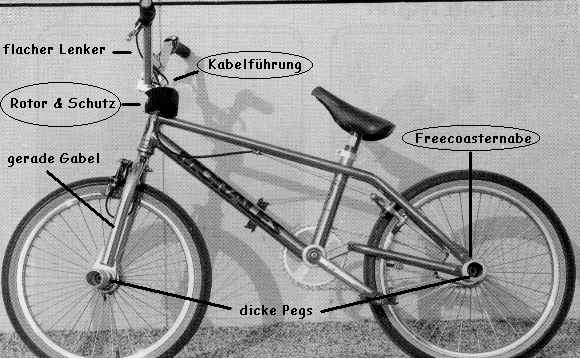
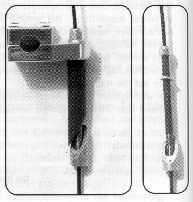 This bolt allows the cable to go right through the forkshaft. It enables the
bar to be turned round the clock. As the next step, with a little help of the
rotor (shown below), it is possible to spin the bars multiple times without
twisting the cables. The rotor's construction requires the rear brake cable
to be splitted into two cables, and to merge those back into one beyond the
rotor.
This bolt allows the cable to go right through the forkshaft. It enables the
bar to be turned round the clock. As the next step, with a little help of the
rotor (shown below), it is possible to spin the bars multiple times without
twisting the cables. The rotor's construction requires the rear brake cable
to be splitted into two cables, and to merge those back into one beyond the
rotor.
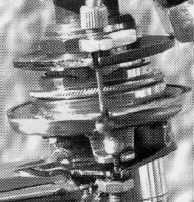
The rotor system is based on two independently moveable plates. They are linked
together just like a normal bearing. If the upper plate is pulled up, the lower
one is going the same way, pulling the lower cables, which in turn operate the
brake. The fine-tuning depends on the plates to be parallel, assuring the best
braking performance.
I would, however, recommend the use of a gyro cover, since the rotors sharp edges
can really hurt. So if you want to protect your knees, use one.
above pictures were taken from FREEDOM's BMX-book, with kind authorization
from FREEDOM.
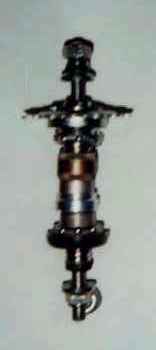
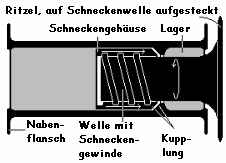 To the left you can see a freecoasters inner parts, on the other side a schematic
view. Basically, it is a Rollercoaster hub, only that there's no brake operation
supported. That is where the name Freecoaster came from. You can pedal forwards
and backwards, just as with a normal hub. The difference shows when rolling
backwards. The pedal does not move. This is needed for different backwheel tricks.
Others are a lot easier and more comfortable when done with a freecoaster.
To the left you can see a freecoasters inner parts, on the other side a schematic
view. Basically, it is a Rollercoaster hub, only that there's no brake operation
supported. That is where the name Freecoaster came from. You can pedal forwards
and backwards, just as with a normal hub. The difference shows when rolling
backwards. The pedal does not move. This is needed for different backwheel tricks.
Others are a lot easier and more comfortable when done with a freecoaster.
Now. How does it work? Well, there is actually a huge screw inside. If you pedal
forward, the screw gets turned and the srewhousing is pulled against the hub's body.
It works like a clutch. And that is why pedaling feels kinda soft.
If rolling backwards, a spring or something appropriate pulls the screwhousing off
the hub's body. The clutch opens and the wheel has no link to the sprocket. The
pedals are free and keep their position. At least as long as you don't put pressure on
the pedals. The spring will tolerate a certain amount of pressure before the clutch
closes again and the link between the wheel and the sprocket is established. You should
know that it depends on the model of the coaster, how much pressure is tolerated. So
you should generally ask some people prior to bying a new coaster.
|
|